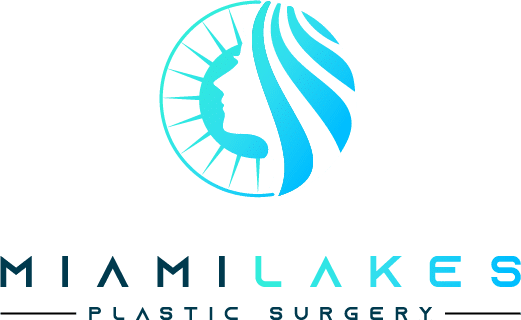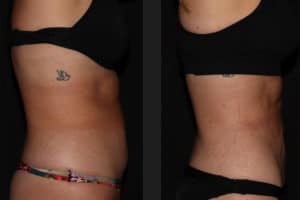Bulbous nose rhinoplasty is a type of cosmetic surgery that aims to reduce the size or reshape the tip of the nose. A bulbous nose refers to a nose that appears rounded or rounded at the tip, giving the nose a rounded appearance that is often perceived as too large for the rest of the face.
Rhinoplasty to correct a bulbous nose typically involves reshaping the cartilage and soft tissue at the tip of the nose to create a more defined and aesthetically pleasing shape. This can be done through the use of sutures, reshaping the underlying cartilage, or removing excess cartilage or tissue.
The procedure can be performed under general anesthesia and typically takes several hours. After the surgery, there may be swelling and bruising, but these should subside over time.
It is important to consult with a qualified plastic surgeon to determine the best approach to correcting a bulbous nose, as every patient’s case is unique and may require a customized treatment plan.
What is rhinoplasty?
The rhinoplasty is a cosmetic procedure that is useful in refining and reshaping the cartilage, bone, and exterior of the nose. It can be performed for aesthetic purposes, medical reasons, or both.
Bulbous Nose Tip After Rhinoplasty
One potential side effect of undergoing rhinoplasty is the development of a bulbous nose tip. This can occur due to the formation of scar tissue after surgery. In many cases, this can be corrected. For example, your surgeon could inject steroids for a positive response.
Who can benefit from this procedure?
Considering the central place that the nose has in our faces, its appearance can dramatically affect our overall facial appearance. Our noses are also functional structures that can be affected whenever there is some type of obstruction within the nose.
Some things that rhinoplasty can help with include:
- Nose reduction: Having an overly large nose can overwhelm your other facial features, while a smaller nose can make other facial features appear too prominent. A rhinoplasty can correct the size of the nose to bring all of your facial features into balance.
- Nasal humps: A bump or hump on the bridge of the nose can have a detrimental effect on both your profile and self-confidence. Nose bumps can make your nose appear overly large.
- Wide nostrils: A rhinoplasty procedure can offer improved proportions between the base of the nose and the bridge.
- Asymmetrical nose: A crooked nose, or some other type of minor imperfection, can have a detrimental effect on your overall appearance. Nasal asymmetry can also impact nasal function. A rhinoplasty can correct these problems and give you a boost to your self-confidence.
Health Benefits
If you look around at your local pharmacy, you will probably notice a wide range of products that claim to enhance breathing, from humidifiers to nasal strips. If you have significant problems breathing through your nose, a rhinoplasty can open up your airways to allow you to breathe easier.
When you breathe better, you’ll get better rest at night. Some people even have a condition called sleep apnea that restricts their breathing while they are sleeping. As a result, they never get truly deep, restful sleep. For many of these people, a rhinoplasty can correct the structural problems with their noses so that they can breathe more fully and sleep more deeply.
How much will my rhinoplasty cost?
The cost of each individual rhinoplasty will differ, based upon the extensiveness of the procedure, geographical differences, and other factors. To determine the cost of your individual rhinoplasty, you should meet with your plastic surgeon in a consultation.
Preparing for Your Rhinoplasty
Most patients begin preparing for their rhinoplasty two weeks before their surgery. By getting started early, you won’t have to worry about rushing around at the last minute.
Two weeks prior to your surgery, arrange for:
- Childcare or pet care, if necessary
- A friend or loved one to drive you home after your procedure
- A friend or loved one to be around for at least 24 hours after your rhinoplasty
Some other preparations that you should make before your rhinoplasty include avoiding drinking alcohol, which could thin your blood and increase your risk of bleeding and bruising. Instead, drink water to remain hydrated.
You should also avoid smoking before your rhinoplasty, as nicotine and tobacco products restrict blood flow, hindering recovery.
In addition, avoid taking aspirin or ibuprofen, as these two products can prevent blood clotting – a necessary feature of proper healing.
You should also inform your plastic surgeon of any other types of medications or nutritional supplements that you are currently taking, as some of them could interfere with prescribed medications or hamper your recovery.
Potential Risks and Complications
Any type of surgery involves some degree of risk. When it comes to rhinoplasty, some potential risks and complications include:
- Infection
- Excessive bleeding
- Numbness
- Nosebleeds
- Scarring at nasal base
- Swelling
- Nerve damage
- Poor results, leading to revision rhinoplasty
Rhinoplasty Recovery and Results
Don’t expect the results of your rhinoplasty to become immediately evident right after your surgery. You can expect some significant swelling that could take a few weeks to significantly improve. And it could take as long as a year for all of the swellings to go away, although you should be ready to go out in public in about two weeks. In four to eight weeks, 90% of your swelling should have gone down.
If you have undergone an open rhinoplasty, expect a longer healing and recovery time, as this type of procedure involves more swelling. The nasal tip is the area that will take the longest to heal and mold to a new shape since this is the thickest part of the nose. This is also why you should wait before panicking if your nasal tip appears more bulbous than you would have expected. It often means that there is some residual swelling.
Rhinoplasty Follow-Up Care Tips:
Here are a few steps that you can take to minimize swelling after your rhinoplasty:
- Avoid overactivity that could worsen swelling.
- Keep your head elevated while sleeping.
- Ice the area as needed.
- Express any post-procedure concerns that you may have to your plastic surgeon.
The Bottom Line
Rhinoplasty is a very popular cosmetic procedure that has helped millions of people improve the function and appearance of their noses. You will obtain the best results possible from your cosmetic surgery if you fully express all of your concerns and questions to your plastic surgeon during your consultation.
References
- American Rhinologic Society. Septoplasty and turbinate surgery. http://care.american-rhinologic.org/septoplasty_turbinates. Accessed Dec. 18, 2018.
- Flint PW, et al. Rhinoplasty. In: Cummings Otolaryngology: Head & Neck Surgery. 6th ed. Philadelphia, Pa.: Saunders Elsevier; 2015. https://www.clinicalkey.com. Accessed Dec. 18, 2018.
- Barbara Woodward Lips Patient Education Center. Surgery on the nose. Rochester, Minn.: Mayo Foundation for Medical Education and Research; 2013.
- Momeni A, et al. Primary open rhinoplasty. Aesthetic Surgery Journal. 2016;36:983.





